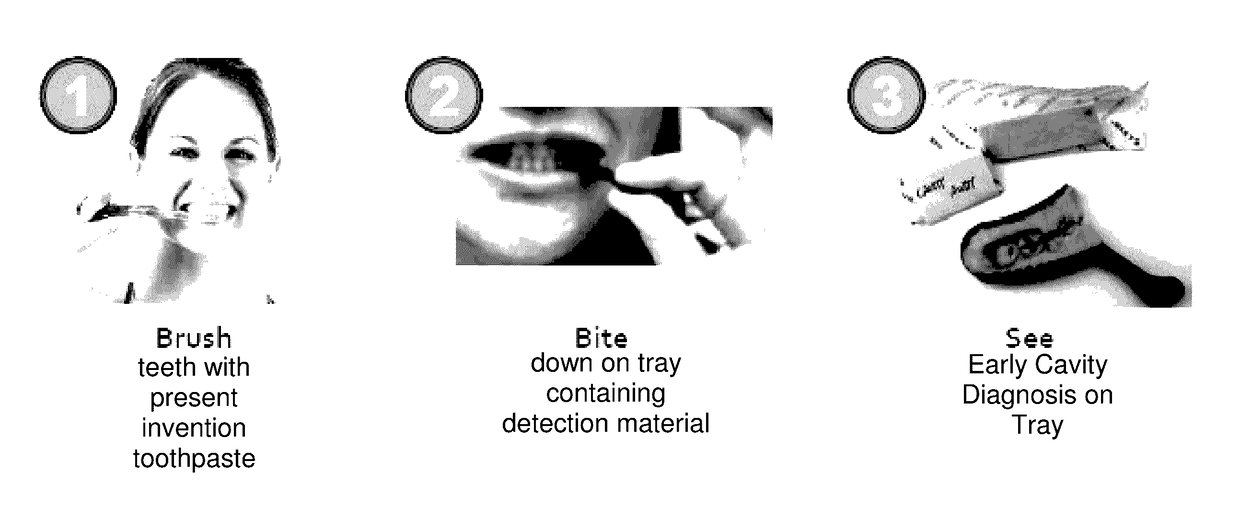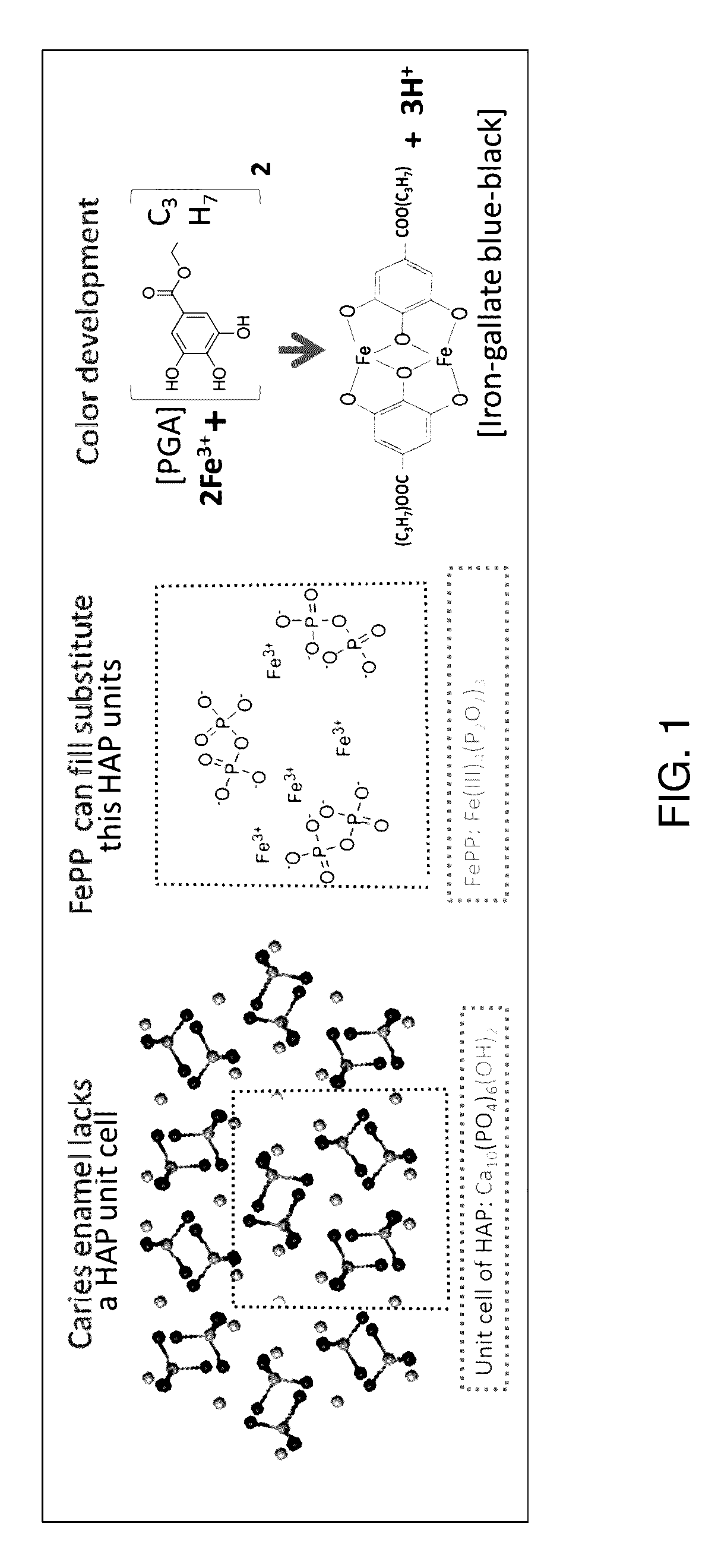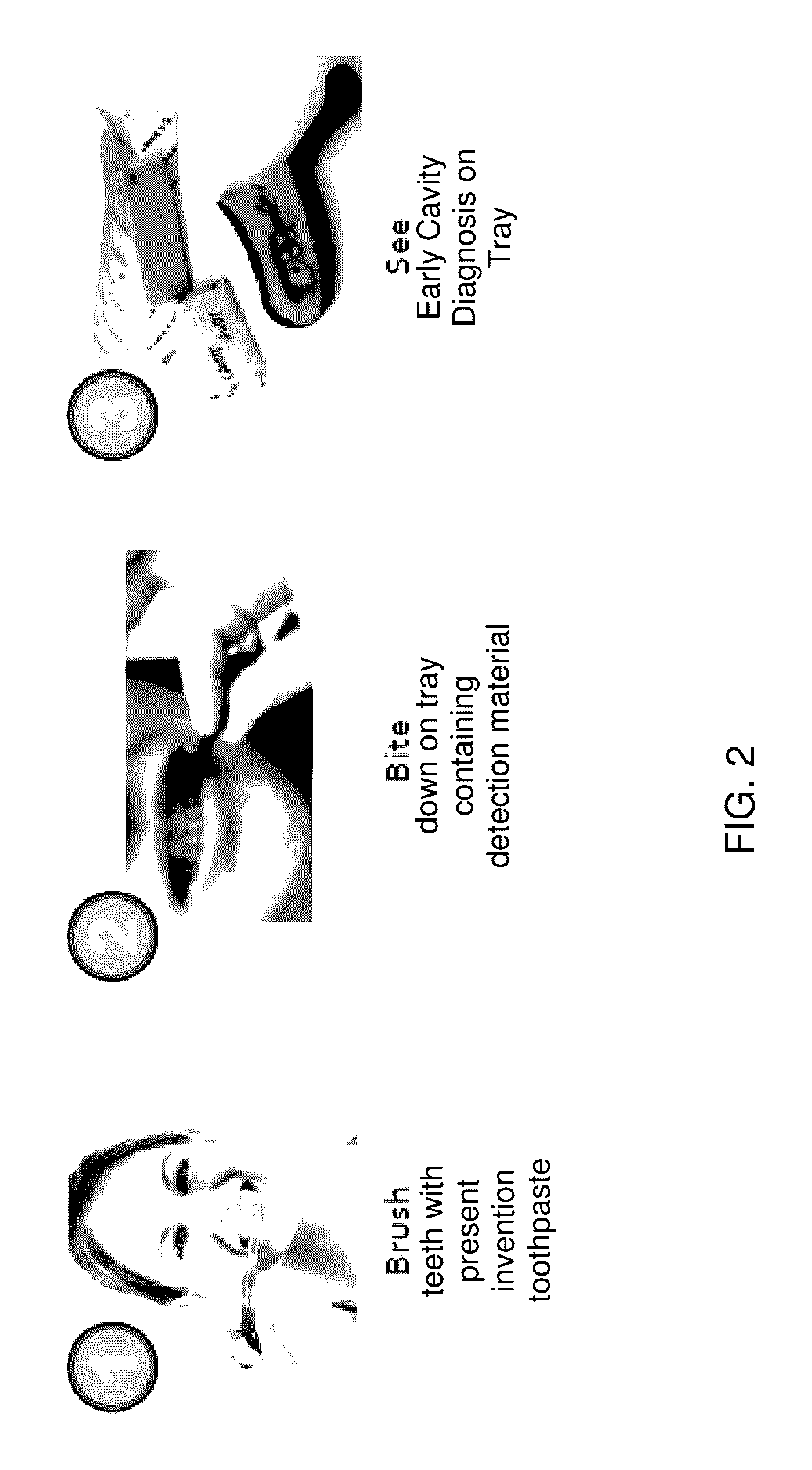Methodology of dental caries detection
a caries detection and dental technology, applied in the field of dental caries detection, can solve the problems of caries that will develop, 45 million americans have very limited limited coverage and access to oral health care, etc., and achieve the effects of simple and fast visual detection, enhanced self-compliance, and low cost and disposabl
- Summary
- Abstract
- Description
- Claims
- Application Information
AI Technical Summary
Benefits of technology
Problems solved by technology
Method used
Image
Examples
example
[0083]The following ex vivo study involved comparing an embodiment of the present invention, using Fe (III)-pyrophosphate and propyl gallate as the binding compound and the detector compound, respectively, with other known caries detection modalities. The results of the study demonstrate that the present invention exhibited superior sensitivity, specificity, PPV (positive predictive value) and NPV (negative predictive value) values than any of the known detection modalities, as compared to histologic analysis which was used as the gold standard control.
[0084]The comparative study utilized 16 sets of quadrant teeth models, containing a total of 72 extracted teeth. In all, 94 occlusal areas of the teeth were examined.
[0085]The known caries detection modalities that were used for purposes of the comparisons included a clinical exam conducted by three different dentists, in accordance with protocols known in the art (e.g., Guerrieri, et al. Br. Dent. J. 213(11):551-7 (2012) (“Initial Cl...
PUM
| Property | Measurement | Unit |
|---|---|---|
| atomic numbers | aaaaa | aaaaa |
| atomic numbers | aaaaa | aaaaa |
| atomic numbers | aaaaa | aaaaa |
Abstract
Description
Claims
Application Information
 Login to View More
Login to View More - R&D
- Intellectual Property
- Life Sciences
- Materials
- Tech Scout
- Unparalleled Data Quality
- Higher Quality Content
- 60% Fewer Hallucinations
Browse by: Latest US Patents, China's latest patents, Technical Efficacy Thesaurus, Application Domain, Technology Topic, Popular Technical Reports.
© 2025 PatSnap. All rights reserved.Legal|Privacy policy|Modern Slavery Act Transparency Statement|Sitemap|About US| Contact US: help@patsnap.com



